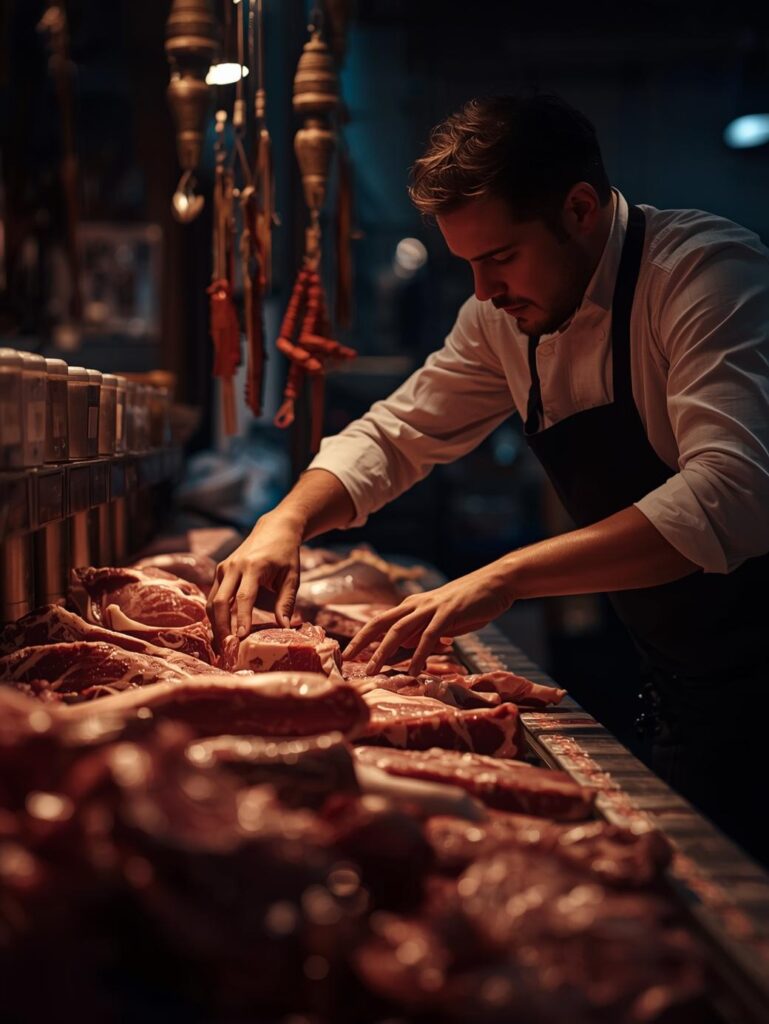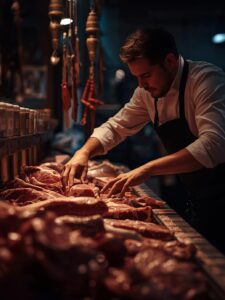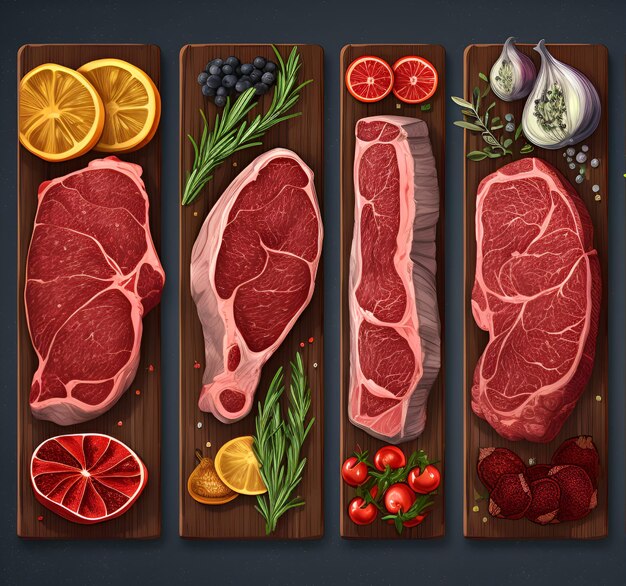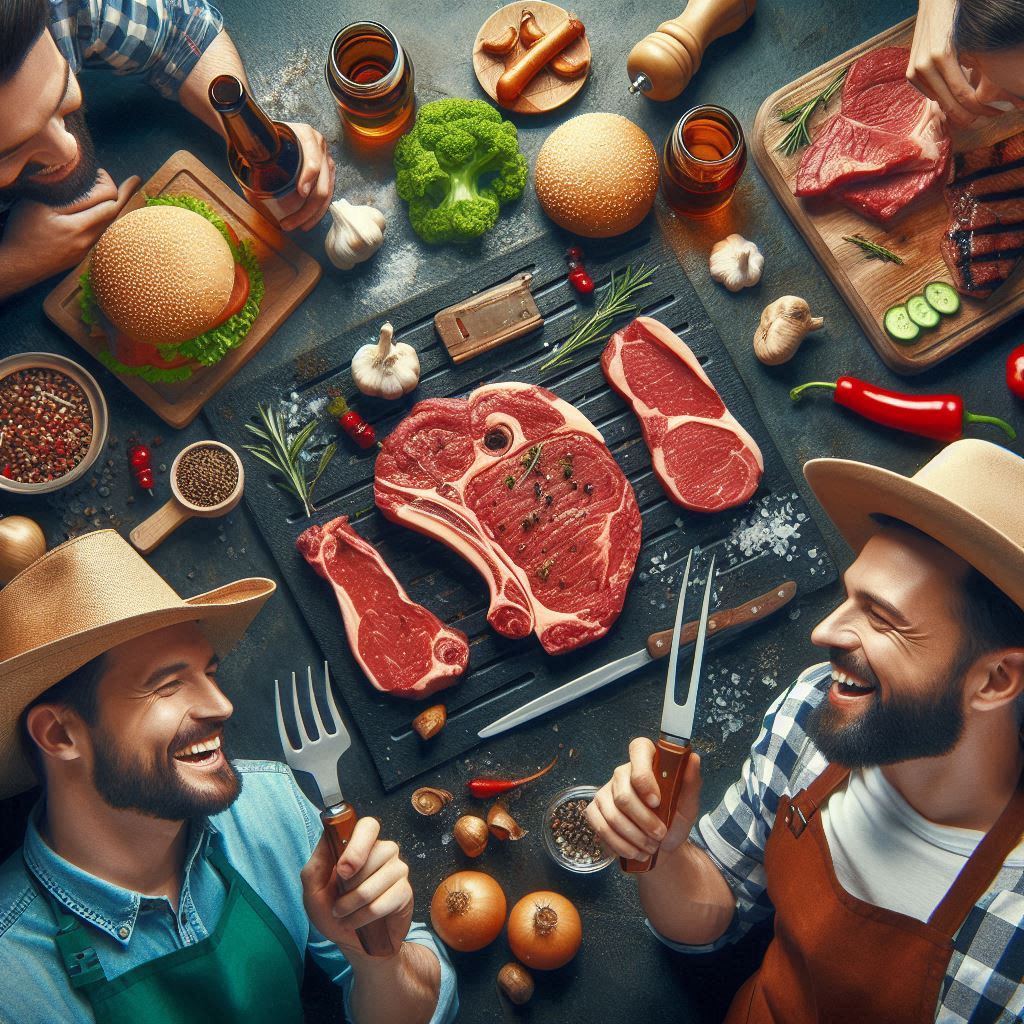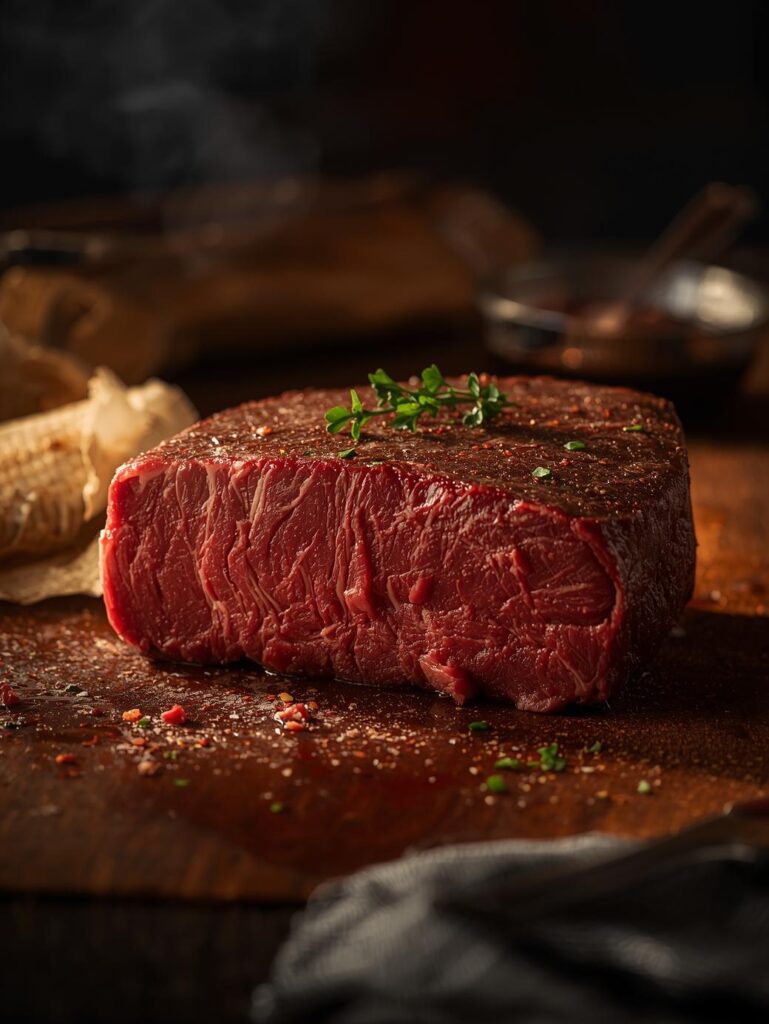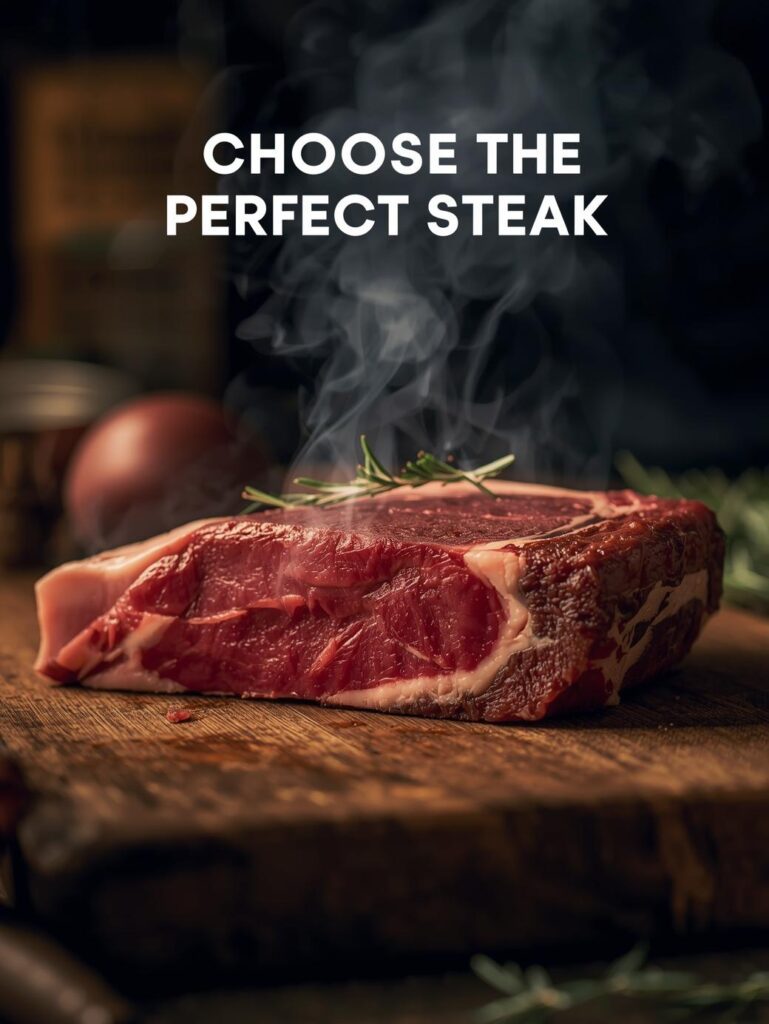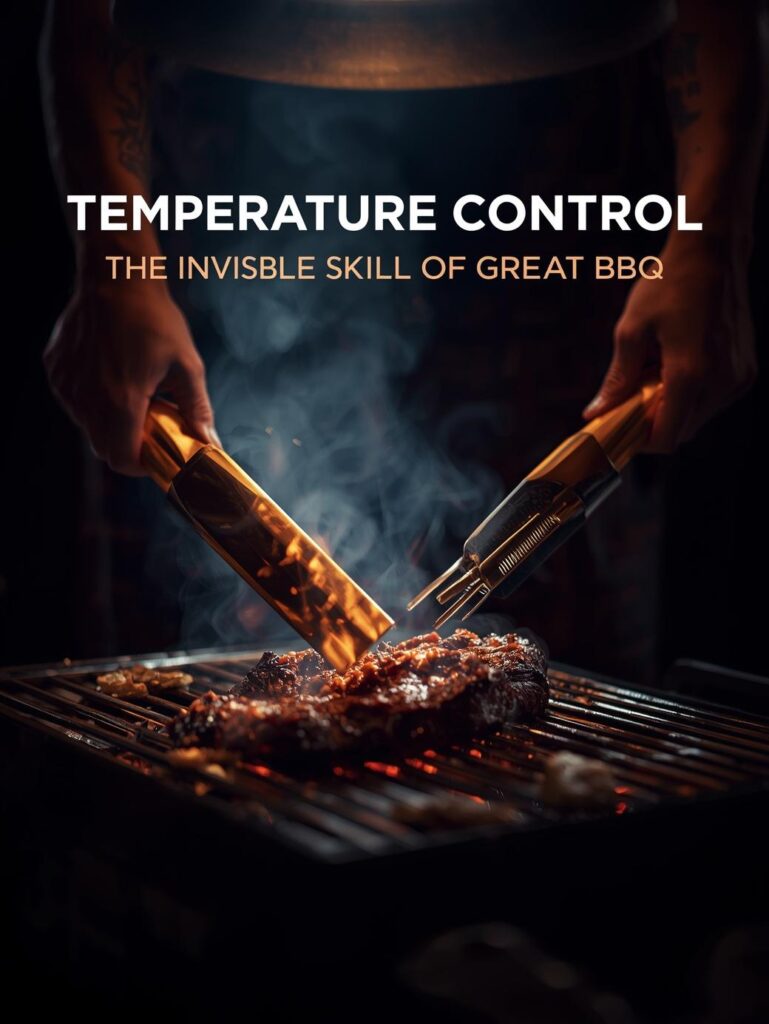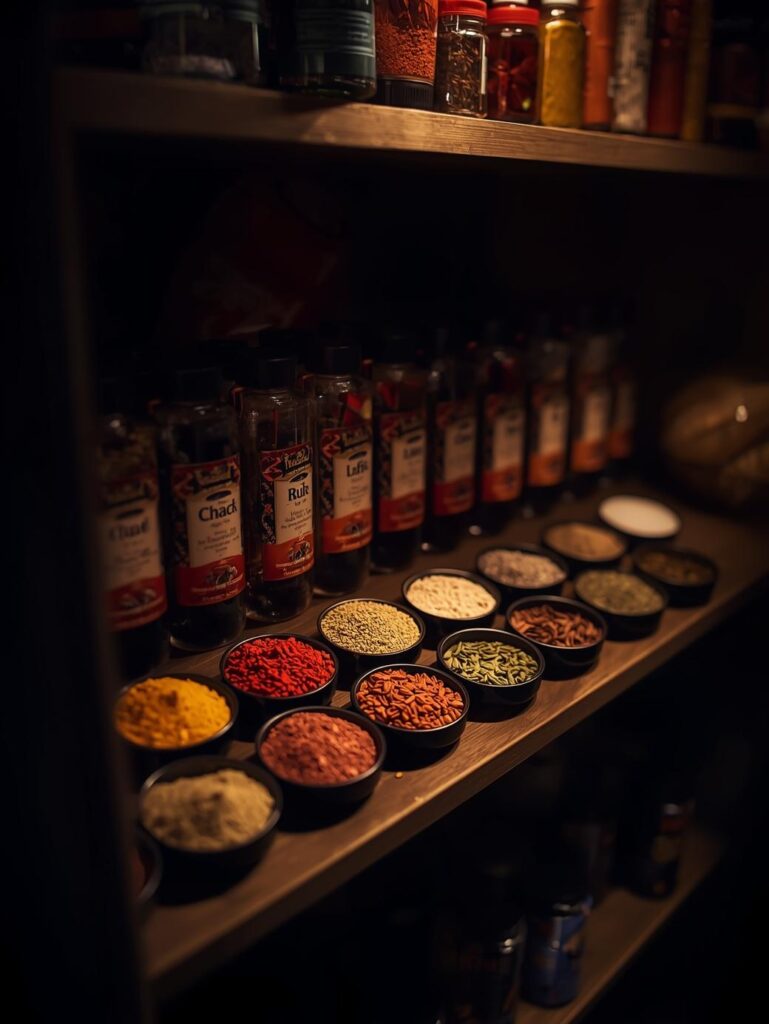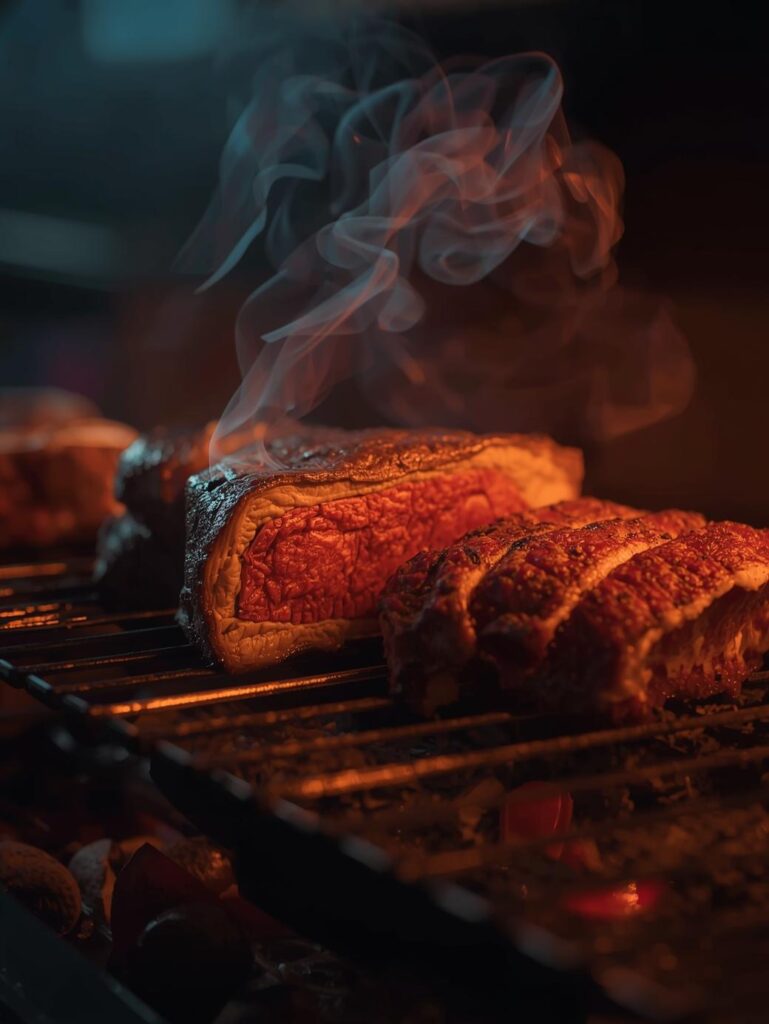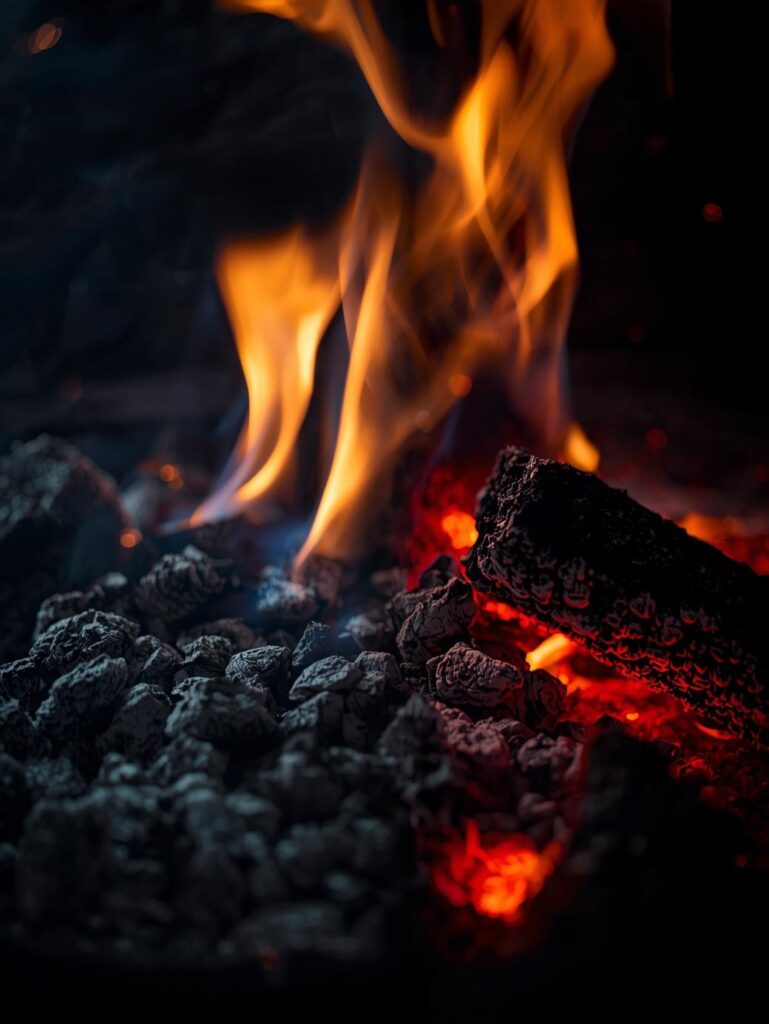Butcher’s Note: The most important decisions in BBQ are made not at the grill, but at the counter. A master cook can’t fix a poor-quality cut. Shopping for meat isn’t a chore; it’s the first and most critical step of the cooking process. This guide will transform you from a passive consumer into an informed buyer, giving you the confidence to spot quality, understand labels, and build relationships that guarantee you bring home the best possible meat, every single time.
Meat Shopping Like a Pro: Your Guide to the Butcher Counter
“Walking into a meat department shouldn’t feel like a guessing game. It’s a treasure hunt. The pros know what to look for: the specific sheen of fresh beef, the firm texture of a well-handled chicken, the fat cap that promises flavor. They don’t just see ‘steak’—they see a story of marbling, color, and cut. This knowledge turns an ordinary purchase into an investment in an unforgettable meal.”
Meat Shopping Like a Pro: Your Guide to the Butcher Counter
Download Your Free Meat Shopping Checklist & Butcher's Lingo Guide
You’re standing in front of the meat case. Packages of steak, chicken, and pork stretch out before you. Prices vary wildly. Colors are different. How do you choose? This guide will equip you with the skills to navigate the meat department with the confidence of a seasoned chef, ensuring you get the best value and quality for your money, no matter your budget.
🎯 THE PRO SHOPPER MINDSET: BE SELECTIVE, NOT PASSIVE
Stop grabbing the first package you see. Start curating your selection.
⚙️ The Three Rules of Pro Shopping
How to Think at the Counter
- Rule 1: Your Eyes Are Your Best Tool: Look past the price and the label. Assess the meat itself—its color, fat distribution, and texture. The meat should speak to you before you buy it.
- Rule 2: Build a Relationship, Not Just a Cart: Whether it’s the supermarket butcher or a local shop, introduce yourself. Ask questions. A good butcher is a treasure trove of knowledge and can offer cuts you don’t see in the case.
- Rule 3: Plan for the Cook, Not Just the Meal: Are you grilling hot and fast? Look for tender cuts. Braising low and slow? Seek out tougher, well-marbled cuts. Let your cooking method guide your purchase. Use our Beef Cuts Explained guide as your roadmap.
🎯 The Average Shopper vs. The Pro Shopper
🛒 The Average Shopper
- Grabs the first package on the shelf
- Shops by price alone
- Never speaks to the butcher
- Confused by labels (Prime, Choice, etc.)
- Chooses lean over flavorful
- Result: Inconsistent, often disappointing cooks
🥩 The Pro Shopper
- Inspects color, marbling, and packaging
- Shops for value and quality
- Asks the butcher for recommendations
- Understands and uses grading to their advantage
- Embraces fat for flavor and juiciness
- Result: Consistently excellent, restaurant-quality meals
🔍 BEEF: DECODING THE DETAILS
Beef is where your pro skills will shine brightest. Look for these key indicators.
🎯 The 5-Point Beef Inspection
What to Look for in Every Cut
- Color: Look for a bright, cherry-red color. Avoid meat that is brownish-gray or has dark, dry edges. A deep purple-red is also fine—it means the meat is freshly cut and hasn’t fully bloomed (been exposed to oxygen).
- Marbling (The Holy Grail): Those thin, white streaks of fat within the muscle are marbling. This intramuscular fat melts during cooking, basting the meat from the inside out, resulting in incredible juiciness and flavor. More fine marbling = better eating experience. Learn why in our Marbling Explained guide.
- Fat Cap: Look for a firm, creamy-white outer layer of fat. It should not be yellow or rancid-looking. A good fat cap protects the meat during cooking and adds flavor.
- Texture: The meat should look firm, not slimy or mushy. It should spring back lightly when pressed (through the packaging).
- Packaging: Avoid packages with excessive amounts of blood or purge (liquid) in the bottom. This can indicate the meat has been frozen and thawed or is old.
📊 The Pro Shopper’s Decision Matrix
🎯 Your At-a-Glance Guide to Quality
| Meat Type | ✅ What to Look For (The Green Lights) | 🚫 What to Avoid (The Red Flags) |
|---|---|---|
| Beef Steaks & Roasts | Bright cherry-red color, abundant white marbling, firm texture, creamy-white fat cap. | Brown or gray color, large tough fat seams, slimy surface, excessive liquid in tray. |
| Ground Beef | Bright red color, visible flecks of white fat (for 80/20), firm pack. | Brown or discolored areas, plastic pulled away from meat, sour smell. |
| Pork (Chops, Loin) | Pale pink to rosy-red color, firm, moist texture, white fat. | Dark, purplish color, dry edges, yellowish, soft fat. |
| Chicken | Pinkish-white flesh, plump appearance, no off odors, skin moist not slimy. | Grayish color, dry or torn skin, strong odor, excessive liquid. |
| Lamb | Bright pink to red color, firm, fine-grained texture, white, brittle fat. | Dark purple color, yellow fat, strong “gamey” odor through packaging. |
🏷️ DECODING LABELS & GRADES
The packaging tells a story. Learn to read it.
USDA BEEF GRADES
Understanding the Hierarchy
- Prime: The highest grade. Abundant marbling. Sold mostly to high-end restaurants and some specialty butchers. The ultimate for steaks.
- Choice: High quality, with less marbling than Prime. The most common grade in supermarkets and excellent for most grilling.
- Select: Leaner still, with minimal marbling. Can be less juicy and flavorful. Best for marinating or braising.
- Pro Tip: For special occasion steaks, seek out Prime. For everyday grilling, high-quality Choice is perfect. See our Prime vs. Choice deep dive.
COMMON MARKETING TERMS
What They Really Mean
- “Natural”: Minimally processed, no artificial ingredients. Verdict: Mostly meaningless from a quality standpoint.
- “Organic”: Fed 100% organic feed, no antibiotics or hormones. Verdict: Speaks to farming practices, not necessarily marbling or tenderness.
- “Grass-Fed”: Diet consists mainly of grass. Verdict: Often leaner with a more mineral-rich, “gamey” flavor. Can be less tender than grain-fed.
- “Dry-Aged”: Hung in a controlled environment to concentrate flavor and tenderize. Verdict: A sign of high quality and complex flavor. Expect a premium price.
🤝 WORKING WITH YOUR BUTCHER: THE ULTIMATE PRO MOVE
This single habit will improve your meat quality more than any other.
🗣️ How to Talk to a Butcher
Your Script for the Counter
- Ask for Specific Thickness: Don’t settle for pre-cut steaks. Ask for “1.5-inch thick ribeyes” or “2-inch thick pork chops.” Thicker cuts are more forgiving on the grill.
- Request Special Cuts: See a whole loin? Ask for it to be cut into chops. See a whole pork shoulder? Ask for the “picnic” or “butt” portion. See a packer brisket? Ask them to trim it for you.
- Ask for Recommendations: “What looks particularly good today?” or “I’m planning to smoke this weekend, what’s a good value cut for pulled pork?”
- Build Rapport: Be polite, patient, and a repeat customer. A good butcher will start to remember you and set aside the best cuts.
💰 SHOPPING STRATEGIES FOR EVERY BUDGET
Great meat doesn’t have to break the bank. Shop smart.
🎯 The Value Shopper’s Playbook
Maximize Flavor, Minimize Cost
- Buy Whole and Cut Yourself: A whole chicken is cheaper per pound than parts. A whole pork loin can be cut into chops, roasts, and stir-fry strips.
- Embrace “Tough” Cuts: Chuck roast, pork shoulder, beef shank, and brisket are often much cheaper than steaks. With low, slow cooking (braising, smoking), they become incredibly tender and flavorful. Check out our Budget BBQ Guide.
- Shop the Sales & Freeze: When high-quality steaks or roasts go on sale, buy in bulk. Vacuum-seal and freeze them. A properly frozen steak is far better than a fresh, low-quality one.
- Don’t Fear the “Manager’s Special”: This is often just meat nearing its “sell-by” date. If the color and smell are good, it’s perfectly safe. Cook it that day or freeze it immediately.
📋 THE PRO SHOPPER’S PRE-TRIP CHECKLIST
Your Game Plan for the Store
Step 1: The Plan
Know what you’re cooking this week. Are you grilling, smoking, or braising? This dictates your cut.
Step 2: The Inspection
Go through the 5-Point Inspection for your chosen meat. Color, Marbling, Fat, Texture, Packaging.
Step 3: The Conversation
Engage the butcher. Ask for a specific cut, thickness, or their recommendation.
Step 4: The Transport
Bring a cooler bag for the trip home, especially in warm weather. Keep meat cold.
🚨 MEAT SHOPPING TROUBLESHOOTING: RED FLAGS & SOLUTIONS
🎯 When to Walk Away and What to Do
| Red Flag | What It Means | Pro Action |
|---|---|---|
| Brown/Gray Color | Meat is oxidizing and is less fresh. | Politely ask the butcher if they have any in the back that was cut more recently. If not, choose a different cut or store. |
| Slimy Texture | Bacterial growth. Meat is spoiling. | Do not buy. Inform the store manager so they can pull the product. |
| Excessive Liquid in Package | Meat has been frozen/thawed or is old and losing moisture. | You’re paying for water weight. Choose a package with minimal purge. |
| Off or Sour Odor | Clear sign of spoilage. | Do not buy. Fresh meat should have a mild, slightly sweet, or neutral smell. |
🏁 YOU ARE NOW A PRO SHOPPER
You now possess the most valuable skill in a cook’s arsenal: the ability to source high-quality ingredients. You can walk into any market, assess the offerings with a critical eye, and engage with butchers to get exactly what you need. This knowledge ensures that every meal you cook starts with the best possible foundation.
Remember the three rules: trust your eyes, build relationships, and plan your cook. Now go forth with confidence and bring home the good stuff.
Become an expert on every beef cut with our complete visual encyclopedia
Your Meat Buying Library: Become an expert on all things meat.

